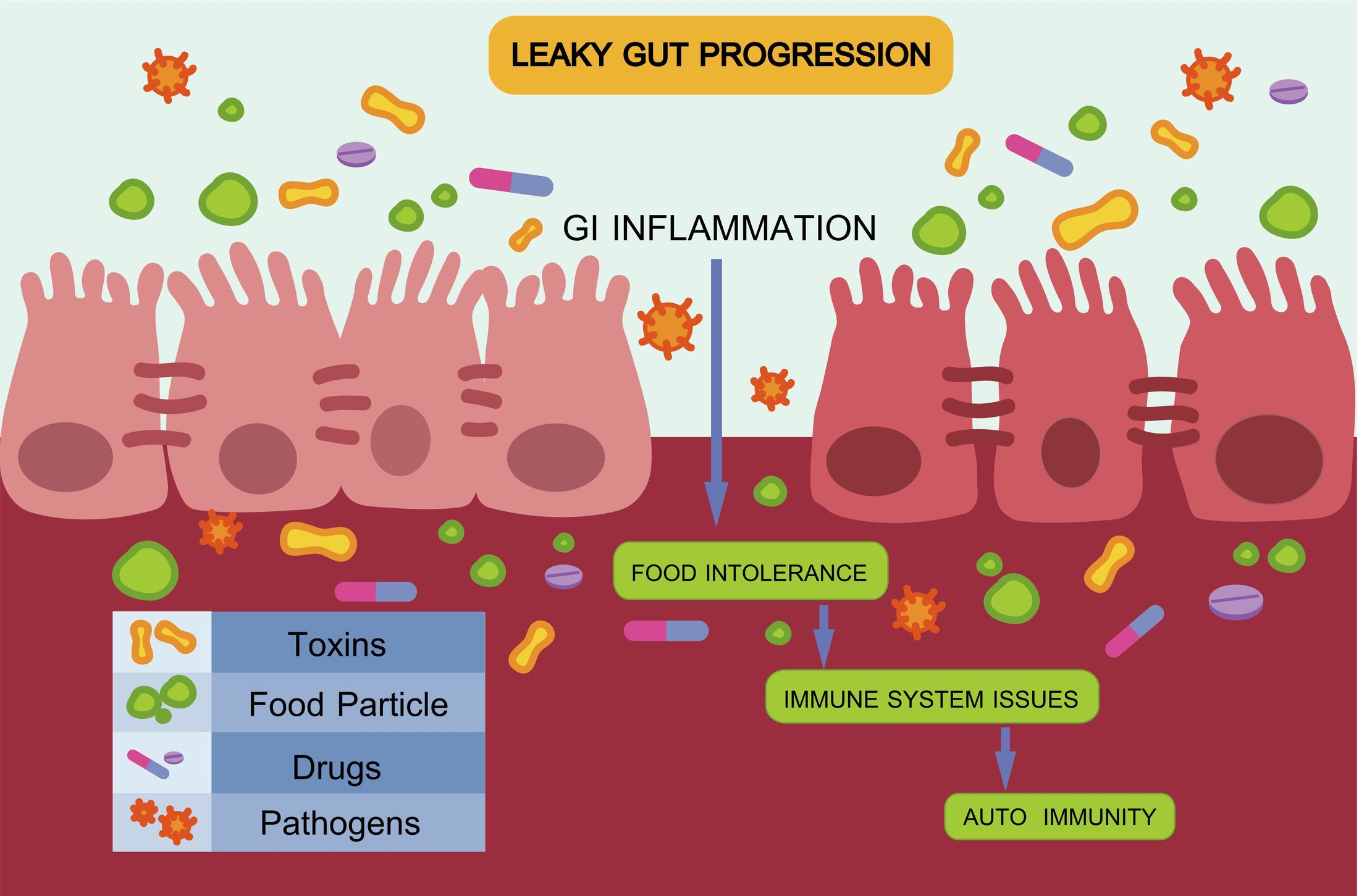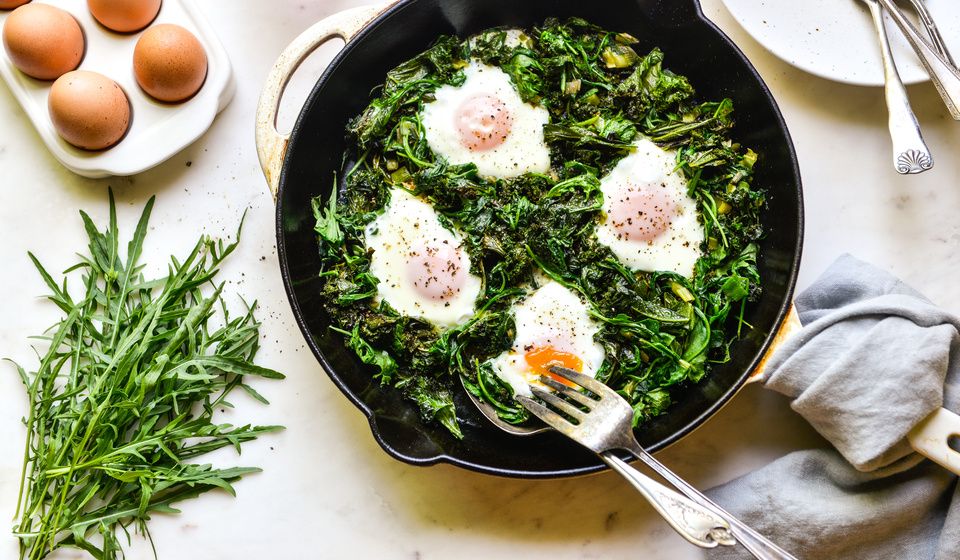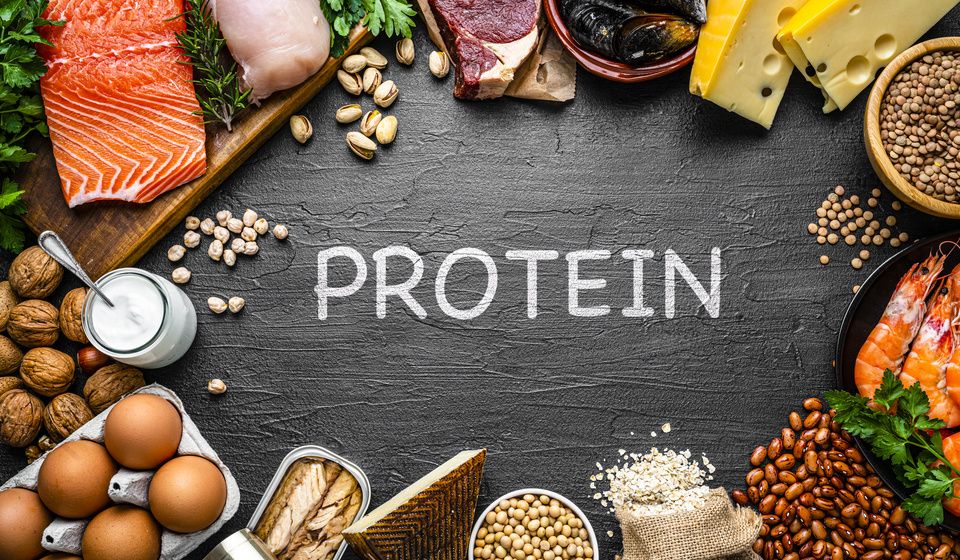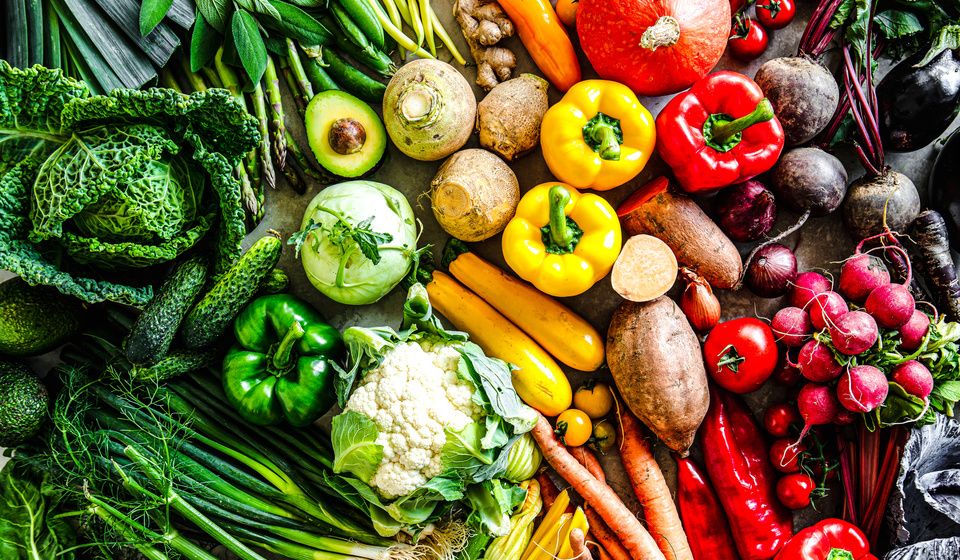How Is Food Connected to Chronic Inflammation?
Ali Segersten Apr 08, 2022 8 comments
There are three different ways food can create inflammation in the body. The first is eating foods that are inflammatory, such as fried foods, highly processed and packaged foods, foods that contain rancid oils and fats, and highly processed meat products. The second way is by consistently eating too many sugars and carbohydrates for your body. High blood sugar can create a cascade of inflammatory events. The third way food can trigger inflammation in the body is by consuming foods your immune system has been primed to react to, which is called a food sensitivity. A food or food group that may be healthy and anti-inflammatory for one person could be the source of a lot of damaging inflammatory chemicals for another person. Therefore, when it comes to a whole foods diet, there just isn’t one right way to eat.
Today I am going to focus on how food sensitivities create a cascade of inflammation in the body and what you can do about it.
How do food sensitivities create inflammation in the body?
Like I explained in detail in my digestion article, food needs to be broken down into its smallest components in order to be absorbed and utilized. When larger food antigens cross the intestinal epithelial layer, the immune system can recognize these as foreign invaders. This may not always be the case, but in the presence of decreased barrier function (leaky gut) and dysbiosis (bacterial overgrowth), it often is. Compromised intestinal barrier function can happen after consuming highly inflammatory foods (like rancid oils, deep fried foods, highly processed foods, etc.), as well as from communication with the nervous system (the gut-brain axis) and immune system.
Immune cells that reside along the intestinal barrier can get triggered from food or bacterial components (LPS) and release inflammatory immune chemicals called cytokines. Certain cytokines, such as TNF-a, are known to disrupt the tight junction proteins (the proteins that keep the cells of the intestinal lining together).
The immune reaction to a virus or bacteria is the same response the body uses when reacting to a food. This is called a food hypersensitivity.
Immune cells wait on the other side of the intestinal epithelium to sample contents of the intestines and determine if what is crossing over is safe or unsafe. If the immune system determines a food to be unsafe, an inflammatory immune cascade is set into motion. This is called a TH1 immune response. Remember, this is a very important process to remove harmful bacteria and viruses from the body and create immune memory to them.
When the immune system responds to food in this way, more inflammatory cytokines are released, which can damage the intestinal lining even more, and travel throughout the body creating brain fog, depression, chronic fatigue, joint pain, skin issues, and can exacerbate autoimmune conditions. TNF-a, for example, is a key player in the damage to tissues in two autoimmune conditions—rheumatoid arthritis and ulcerative colitis. Additionally, B cells will make IgG antibodies to the food antigens. These antibodies can then bind to receptors attached to macrophages (immune cells of the innate immune system). This then releases a secondary cascade of inflammatory chemicals called reactive oxygen species, or ROS (also known as free radicals).
This is a good thing when you are fighting a viral or bacterial infection! But not so great when the source of this reaction is food. ROS are highly unstable molecules that steal electrons (say from cell membranes, perhaps) and stimulate the immune system even more, causing more inflammatory cytokines to be released, which then makes you feel brain fog, crabby, fatigued, depressed or anxious, and achy all over your body.
What if you are eating foods your immune system is reacting to everyday? Then you'll have chronic inflammation.

How can you stop this inflammatory process?
In order to calm down inflammation, it's important to not only focus on eliminating foods that your body has launched a chronic immune attack against, but also to remove all inflammatory foods and greatly increase the amount of antioxidants and phytochemicals coming from your diet. Antioxidants like vitamin C and vitamin E donate electrons to make these ROS molecules stable. Quenching free radicals begins to stop part of this inflammatory cascade.
Plant chemicals, like curcumin from turmeric, sulforaphane from raw cruciferous veggies, and resveratrol from grape skins, activate something called the Nrf-2 pathway. This pathway calms the inflammatory cascade happening in your body, and happens at the genetic level from the foods you eat! Broccoli sprouts, turmeric, green tea (especially matcha), and many more foods you may be consuming everyday help to lower the levels of these inflammatory cytokines and stop this cycle. Removing foods like trans fats, highly processed foods, rancid oils, and processed meats, that, by their nature, produce intestinal inflammation is critical in healing a leaky gut.
After you have added in antioxidants and a lot of plant chemicals from food (daily), as well as removed all highly processed inflammatory foods, you may want to focus on foods and supplements that increase your T regulatory response. This is the immune response that sees food and doesn't negatively react. Adequate vitamin D and vitamin A are essential to this process; so is stress reduction, deep sleep, and exercise!
Try an Elimination Diet!
The next step is to begin some type of elimination diet to try to find one or more foods that your immune system is reacting to. This is absolutely essential. You won't be able to heal your gut and stop the inflammation without removing the source of it all. Remember, food reactions cause the immune system to produce a lot of TNF-a, an inflammatory cytokine that damages tight junction proteins, causing more exposure to food and bacteria on the other side of the intestinal wall.
If you have not yet tried an elimination diet, I suggest you start with a Basic Elimination Diet. This simplified version only removes six food groups and will offer you the greatest chances of success (click on the "diet information" tab to learn how to do this diet). If you are ready to dive right in, then try the Full Elimination Diet. This is our unique version of an elimination diet. You can order the book, which walks you through the whole process or join our online program (I share plenty of cooking videos that show you how to cook and prepare many elimination diet staple recipes).
Feeling bad everyday is difficult, and impedes our ability to perform normal functions, like caring for our children or holding a job. There is a way out of it, but it does take some major dietary changes. Over time, the inflammation will calm down and you will feel better; I've seen it all the time. Food is powerful medicine!
If you'd like more support you can become a Nourishing Meals® member and combine diets to create a personalized elimination diet. Members have access to over 1800 healing recipes and pre-made Elimination Diet meal plans to help you get started right away. Our membership site also offers an option for adding foods back in to the search query for the reintroduction process, streamlining this last phase of the elimination diet for the best success!
Re-cap to reducing inflammation:
- Remove inflammatory foods. You know what these are! They are often the most addictive foods.
- Flood your body with anti-inflammatory foods daily! These are all brightly colored plant foods, your antioxidant vitamins, and healthy fats like purified fish oil and olive oil. If you are in an inflammation flare, try greatly reducing your food intake down to the absolute minimum you need for just a few days and drink fresh pressed vegetable juices (made at home). I usually recommend a blend of cabbage (or napa cabbage if you need low-FODMAP), cucumber, a TON of fresh ginger, and some citrus, like a peeled lemon, lime, or orange. No fruits other than a small amount of citrus. The juice should be primarily non-starchy green vegetables and as much fresh ginger as you tolerate. Drink this as often as possible and include small amounts of freshly cooked high quality animal protein for at least two meals.
- Remove food triggers! Do an elimination diet. This isn't something you can jump into tomorrow. It requires some careful planning and removing of all gluten from your kitchen! We recommend taking a week to begin planning and preparing for the diet. Create meal plans so you can stay organized and on track. Our membership site here allows you to create meal plans, schedule recipes to a planning calendar, and create customized shopping lists....all with hundreds of delicious, healing recipes! An elimination diet requires thoughtful planning, organization, and support. You got this!

About the Author
Alissa Segersten, MS, CN
Alissa Segersten, MS, CN, is the founder of Nourishing Meals®, an online meal-planning membership with over 1,800 nourishing recipes and tools to support dietary change and better health. As a functional nutritionist, professional recipe developer, and author of The Whole Life Nutrition Cookbook, Nourishing Meals, and co-author of The Elimination Diet, she helps people overcome health challenges through food. A mother of five, Alissa understands the importance of creating nutrient-dense meals for the whole family. Rooted in science and deep nourishment, her work makes healthy eating accessible, empowering thousands to transform their well-being through food.Nourishing Meals Newsletter
Email updates.






Add Comment
Comments
Hi Ali - just wanted to say…
…
Around 6 years ago, I was…
Around 6 years ago, I was miserable: headaches 5-7 days a week (with nausea); exhausted all the time & sleeping 13 hours/day on weekends; weird muscle, joint, and nerve pains; and intermittent cognitive issues to name only a few issues. I even ended up in the ER one day, where they initially thought I may have had a stroke. Was even diagnosed with early stage lupus. One doctor told me I looked like "the epitome of health," but I felt so bad I told God I didn't want to live to be 70 if this is what 50 felt like. HOWEVER, after 10 days on a strict elimination diet (which I initially resisted), the headaches disappeared! They did not re-appear until 15 months later when I re-introduced milk - but 2 days AFTER ingesting milk! Turns out I had developed a sensitivity to the A1 beta casein in certain milk products and, since I had always enjoyed dairy and had it frequently, but the symptoms were delayed, I never made the connection. What you describe here is the same process my doctor described (functional/integrative). I don't have more words to describe how important this subject is, but I hope sharing this story will help.
Great article. Thanks. …
Great article. Thanks. Perhaps someday you will do an article about balanced meals and how to put foods together to make balanced meals. And, while The Elimination Diet is not a weight loss diet, perhaps some tips on how to use your recipes to best lower weight. Thanks again. Your Elimination Diet along with our Functional Medicine Practitioner changed my life and my wife's!
Hi Jim,
Thanks for the…
Hi Jim,
Thanks for the feedback! I actually have been planning a post on how to create balanced, nourishing meals. :)
Appreciate the suggestions and will work on some article ideas for the future. The elimination diet, along with anti-inflammatory foods, is powerful medicine!
Great article!! Very…
Great article!! Very thorough and even if you know some of the info, always good to be reminded why your dietary choices are the right ones. (Especially around holidays)
Thank you
Thanks Debbie,
Yes, we all…
Thanks Debbie,
Yes, we all need reminders on our "why" sometimes. :)
Thank you so much, Ali! This…
Thank you so much, Ali! This is very helpful. I am working on the elimination diet now. It's only been a few days and I can tell I am starting to feel better.
Hi Cathy,
So glad to hear…
Hi Cathy,
So glad to hear you are feeling better. Sometimes people start feeling better in days, and something it can take a few weeks or months. I am glad the article was helpful. :)